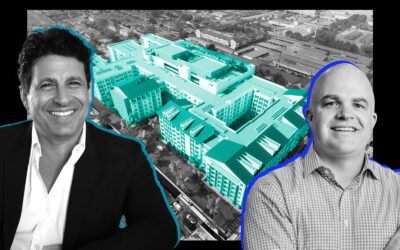Construction cranes are rising again over sites in the nation’s top cities in part because lenders are again providing capital to financing development—especially for apartments.
For example, construction began Dec. 4 on the first high-rise tower at Hudson Yards, a $15 billion redevelopment of 26-acres of rail yards on the West Side of Manhattan. Hudson Yards is expected to be the largest private development in New York City since Rockefeller Center, totaling 13 million sq. ft. It includes 6 million sq. ft. of commercial space, and a similar amount of space for multifamily housing.
“It’s a good time to be a multifamily developer,” says David Cardwell, vice president of Capital Markets for the National Multi-Housing Council. “I don’t know of any who are not pursuing new construction of substantial rehab.”
Many apartment developers still say money is tight for new construction—but a growing number of construction projects are squeezing into top markets as commercial banks, insurance companies and other lenders once again provide capital.
Developers have taken out permits to build new multifamily housing at an annualized, seasonally-adjusted rate of more the 250,000 a year every month since summer 2012, according to Census data. That’s more than twice the rate of construction just after the recession, when almost the only projects built were financed with federal housing subsidies.
Both debt and equity financing are more available, according to the National Multi Housing Council’s October 2012 Quarterly Survey of Apartment Market Conditions. The survey’s indexes measuring equity financing (56) and debt financing (65) all measured at 50 or higher, indicating growth from the previous quarter.
“The members I’ve talked to are bullish and have been able to secure pretty good terms,” says NMHC’s Cardwell. Well capitalized developers can once again find low find non-recourse loans, for example, provided they put equity equal to 30 percent or 35 percent of the development costs into the proposed project. Investors such as insurance companies once again joint venture to provide equity for many deals. Interest rates are much more affordable. “Spreads have tightened,” says Cardwell.
Many of these lenders are commercial banks that have recovered enough from the financial crisis to once again fulfill their traditional role as a source of construction financing. That has made financing from the Federal Housing Administration much less important compared to recent years, when FHA’s 221(d)(4) loan program was one of very few sources of construction financing. Today, FHA faces competition from bank loans that can close much more quickly—though interest rates as low as 3 percent still draws borrowers, Cardwell says.
However, there are still limits on lending. “While development activity has picked up considerably since the trough, finance for both acquisition and construction remains constrained, flowing mainly to the best properties in the top markets,” according to the NMHC survey.
Just 8 percent of respondents indicated construction financing for new apartments was available in all markets for all property types. The vast majority reported construction financing as only available for either the top properties in the top markets (37 percent) or for all property types in the top markets (36 percent).
Underwriting standards are also still tight. About one-in-five banks offer residential construction loan products, according to the 2012 Survey of Credit Underwriting Practices from the Office of the Comptroller of the Currency. Of those 79 percent left their underwriting standards unchanged, none eased their standards, and 21 percent tightened. Of the 39 percent of banks that offer commercial construction loans, three-quarters left their underwriting unchanged, 5 percent loosened and 20 percent tightened.
Source: National Real Estate Investor

